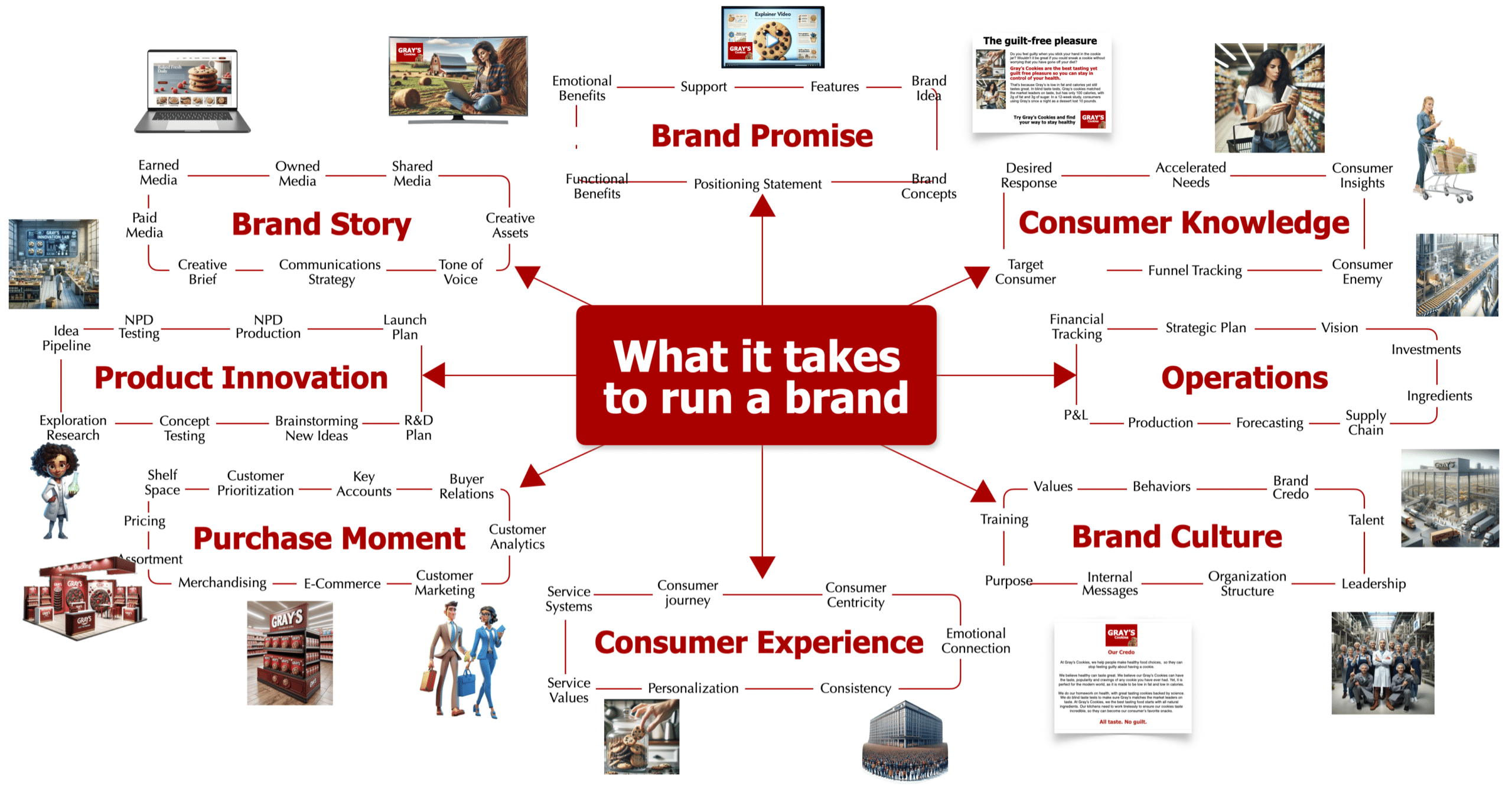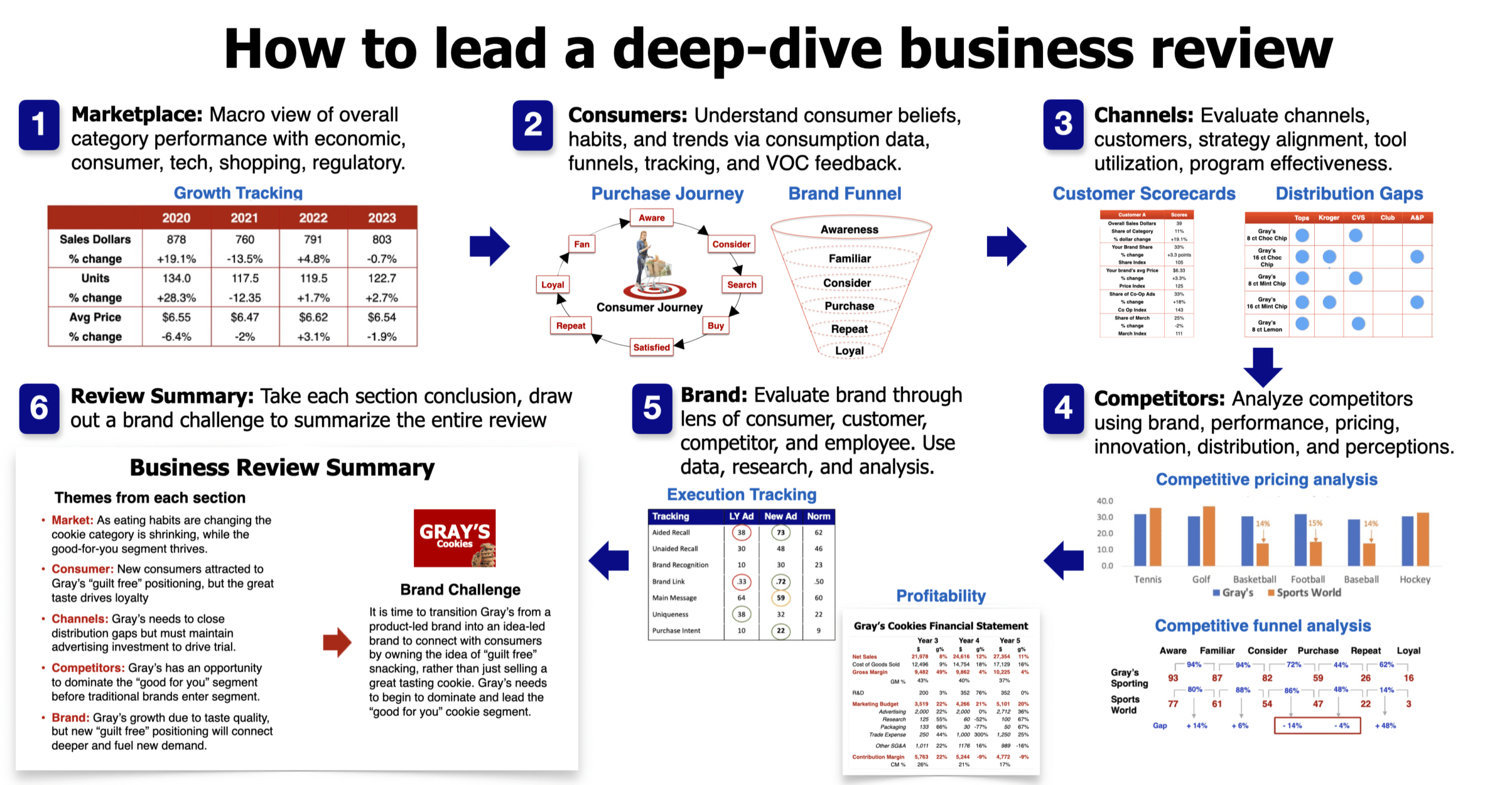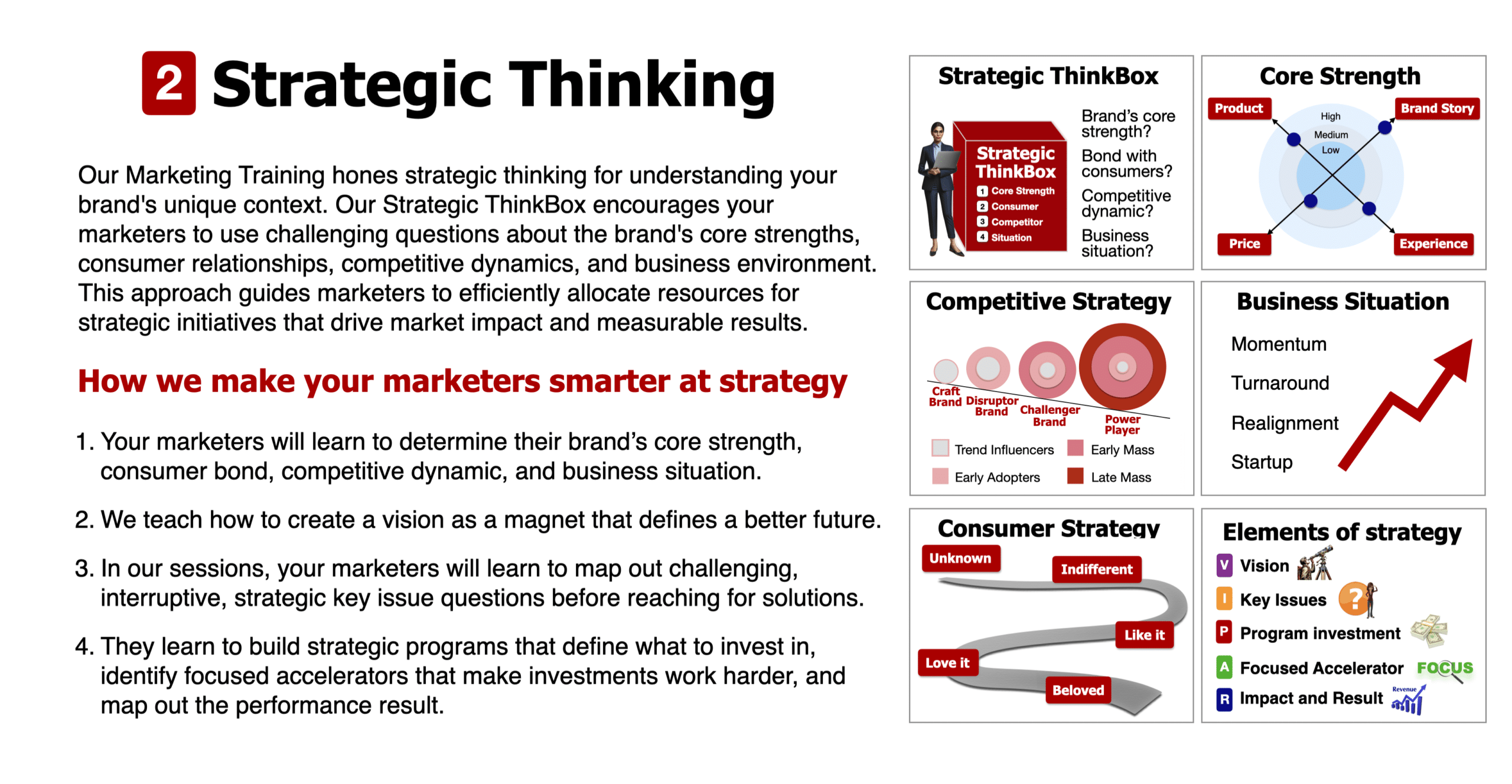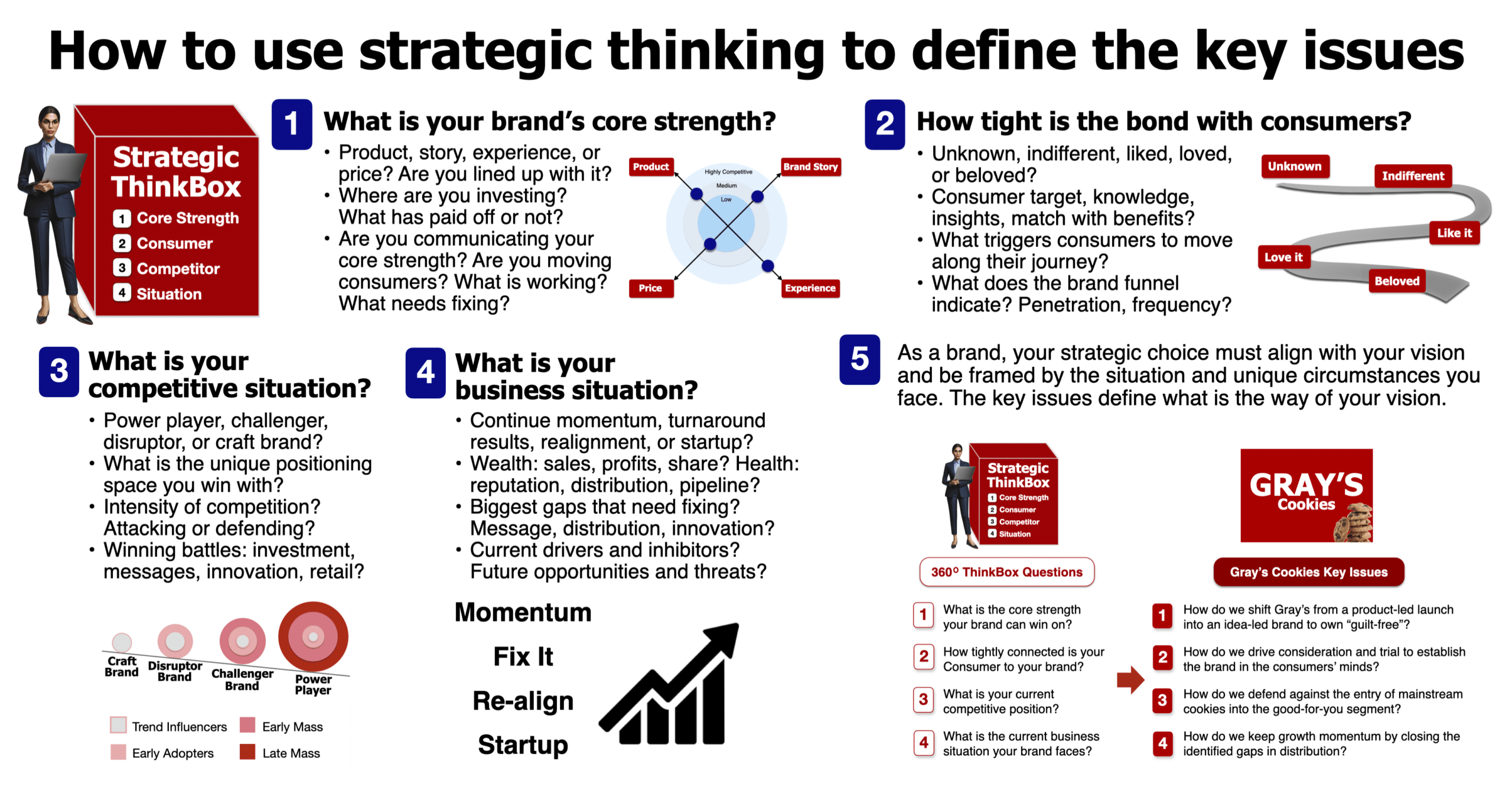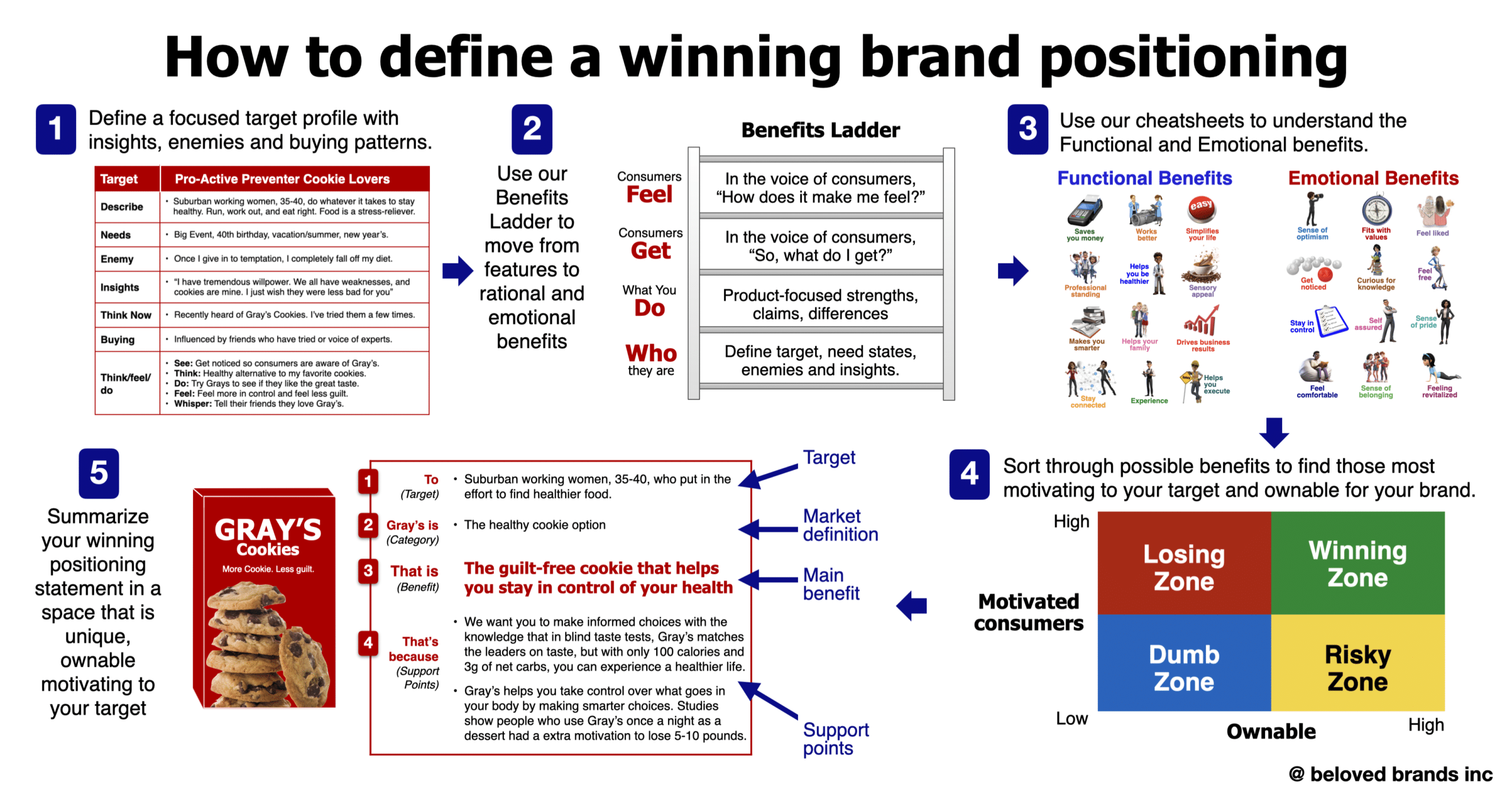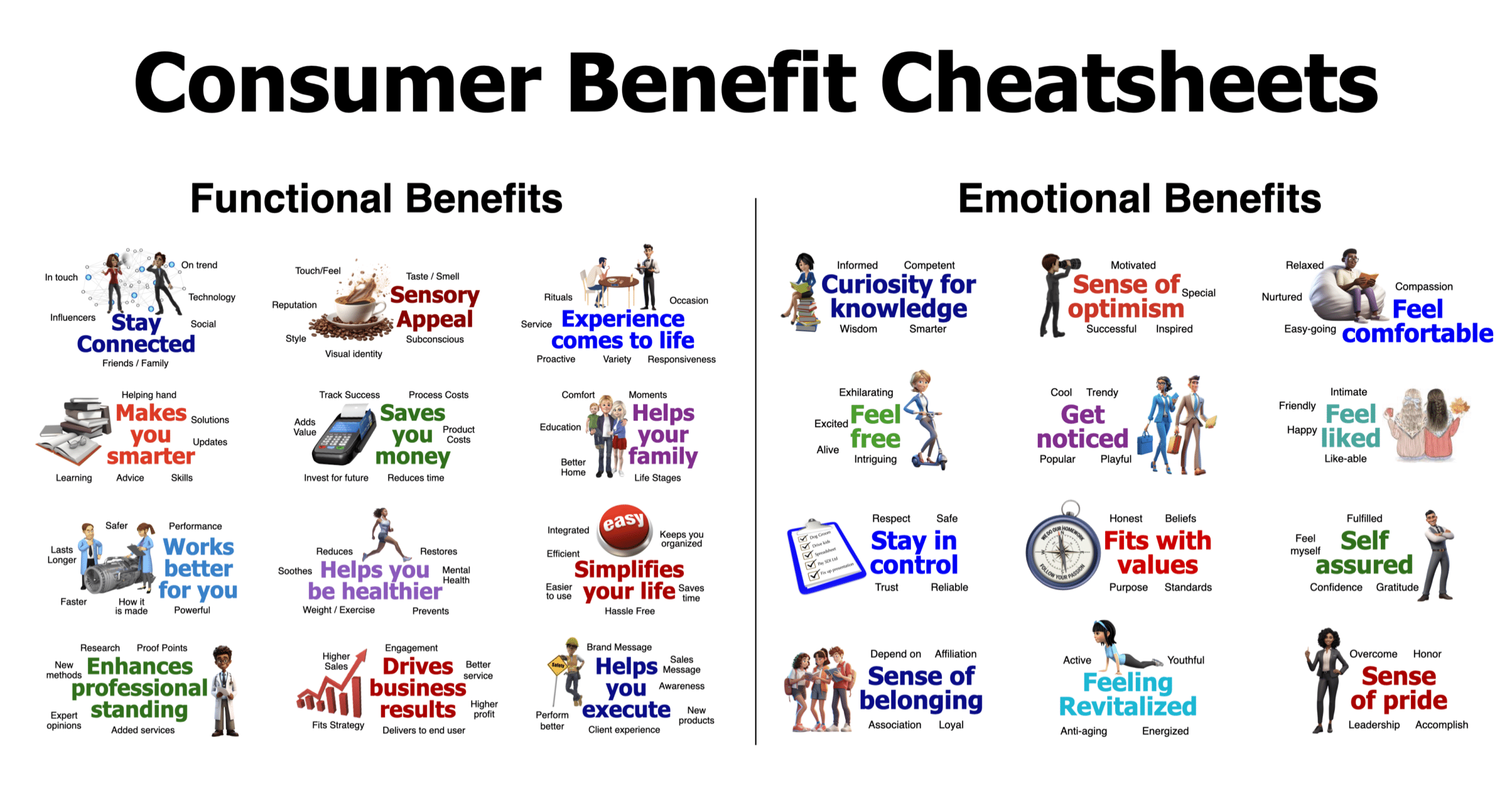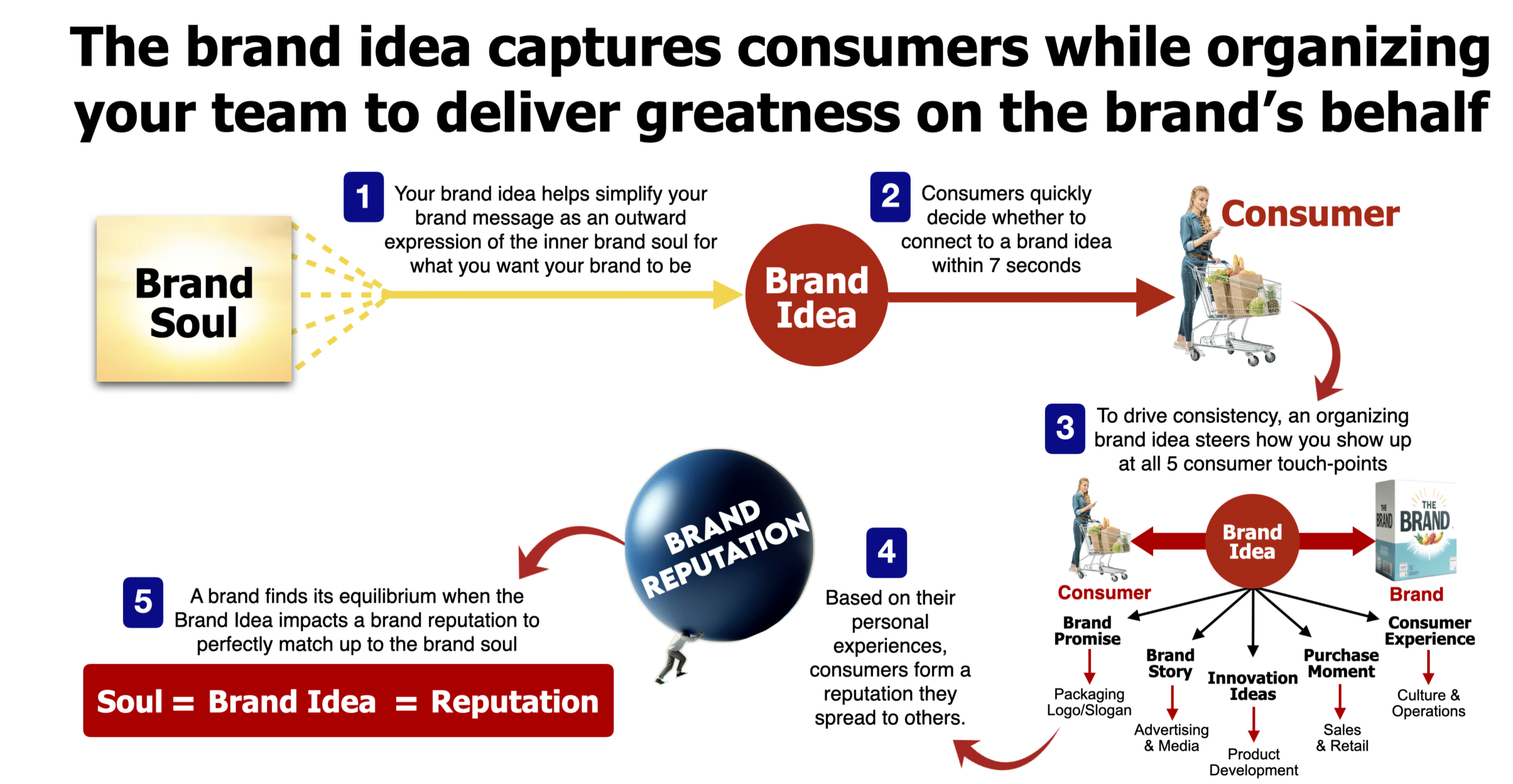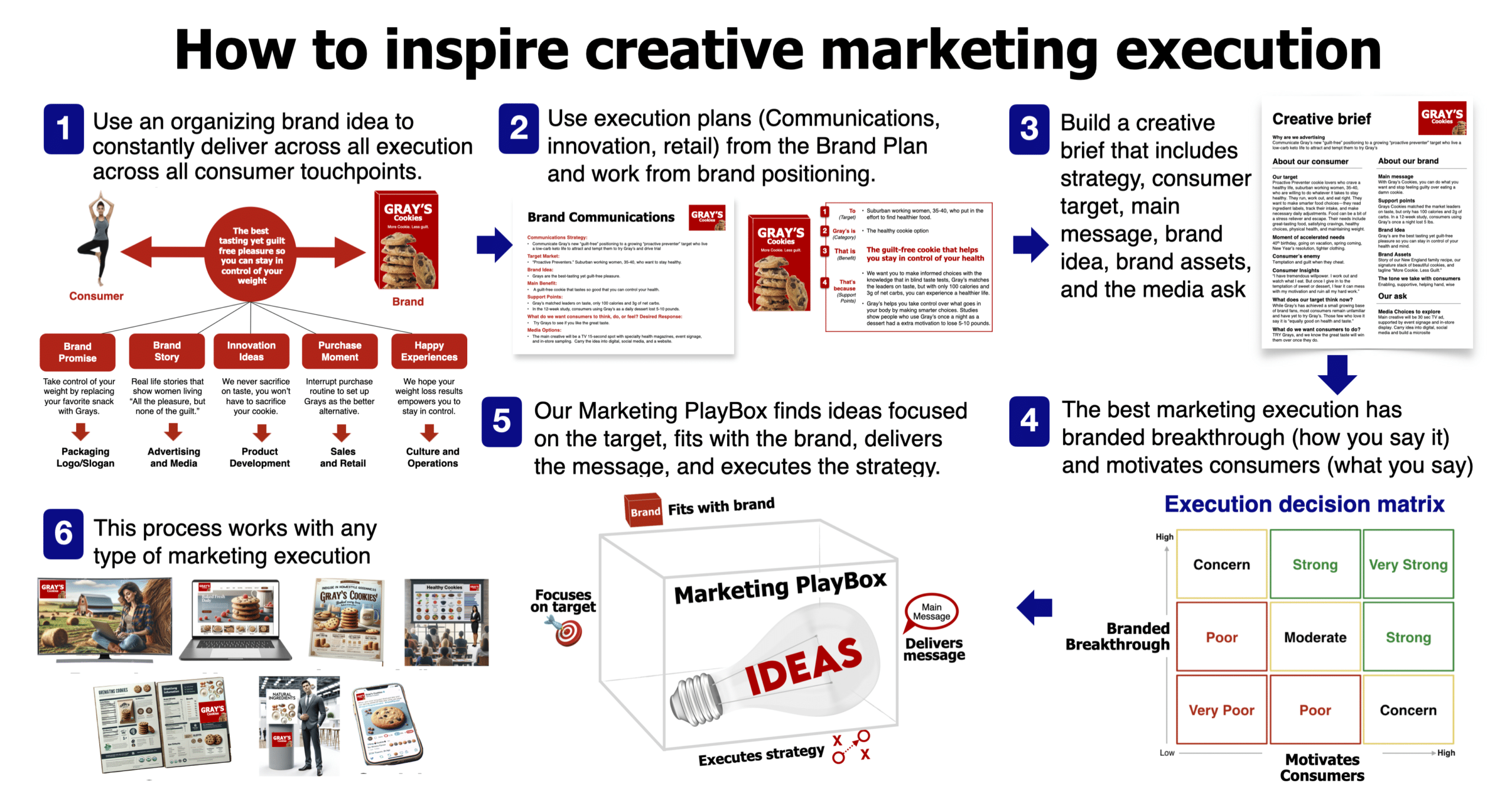The best in brand management run their business as general managers. They partner with sales to drive revenue growth. The marketer creates demand through a brand positioning that motivates the consumer to want to buy while sales get the brand onto the shelf to match where consumers shop. The marketer must partner with operations to build the best possible product at the right cost of goods, generating the ideal margin. They partner with finance to build the budget that delivers the revenue and the ideal profit level. The best marketers engage many partners to execute everything that goes into the market, including packaging, advertising, in-store display, promotions, sampling, or demonstrations.
If marketing wants to be seen as an investment, we must act like an investment manager.
I love brand management because our role is to run the business. I see art and numbers at the same time. When I see an ad I like, it’s like a cash register goes off in my head. I see how displays intercept consumers in the store and get them to try. Regarding media, I understand my consumers enough to know the time of year, week, or day when they will likely engage, listen, and act. Everything I do, I can connect back to the impact it makes in the marketplace and the performance results it delivers.
This does not lead to short-term thinking. Some of our investments should be long-term, and some should be short-term. I want a balance even if I don’t necessarily separate them. I know that a random short-term trial could lead to a life-long customer.
At Beloved Brands, we have developed processes, tools, and models to get the best marketers to analyze, think, define, plan, and execute.
At every stage of brand management, the marketer must connect everything they do to the market impact and performance result.
With brand analytics, you are hunting for ways to create an impact that you can invest in. When you engage strategy, start with a vision that establishes a stretch goal for sales and profit. While I love an inspiring vision, the best marketers add, “And $300 million in sales by 2030” to set a financial target. Then, every strategic choice must move your brand towards that vision.
Choose the brand positioning statement most motivating to consumers and most ownable for the brand. This creates the pathway to more power and profit.
Writing the brand plan includes a forecast for sales and a marketing budget. Every strategy should be seen as an investment choice, and every strategy statement must promise the impact and results it will deliver. Use your limited resources wisely. Choose the ideas that deliver the most back to the brand, and eliminate those that don’t drive results.
When engaging your marketing execution partners, whether agencies or peers around the company, you can use different motivations that get the best work out of each partner. However, as you see the work come back, your role is to choose the ideas that have the most power, growth, and profit for the brand.
That’s your role. You run the business.
Brand Management - Table of Contents
1. Brand Analytics
Using brand analytics to inform the strategy
When I see marketers not going deep enough on brand analytics in brand management, I know they are missing the brand’s underlying issues. The best marketers use their analytical skills to create a deep-dive business review with conclusions about what’s going on with the marketplace, consumers, channels, competitors, and the brand.
Marketers must use analysis to discover their brand’s unique underlying situation to set up strategic thinking. The analytics identifies the growth accelerators that will make your investments move faster, inhibitors that will hold them back, opportunities to take advantage of, and threats to avoid. To go deeper on analytics, click on this link: Brand Audit.
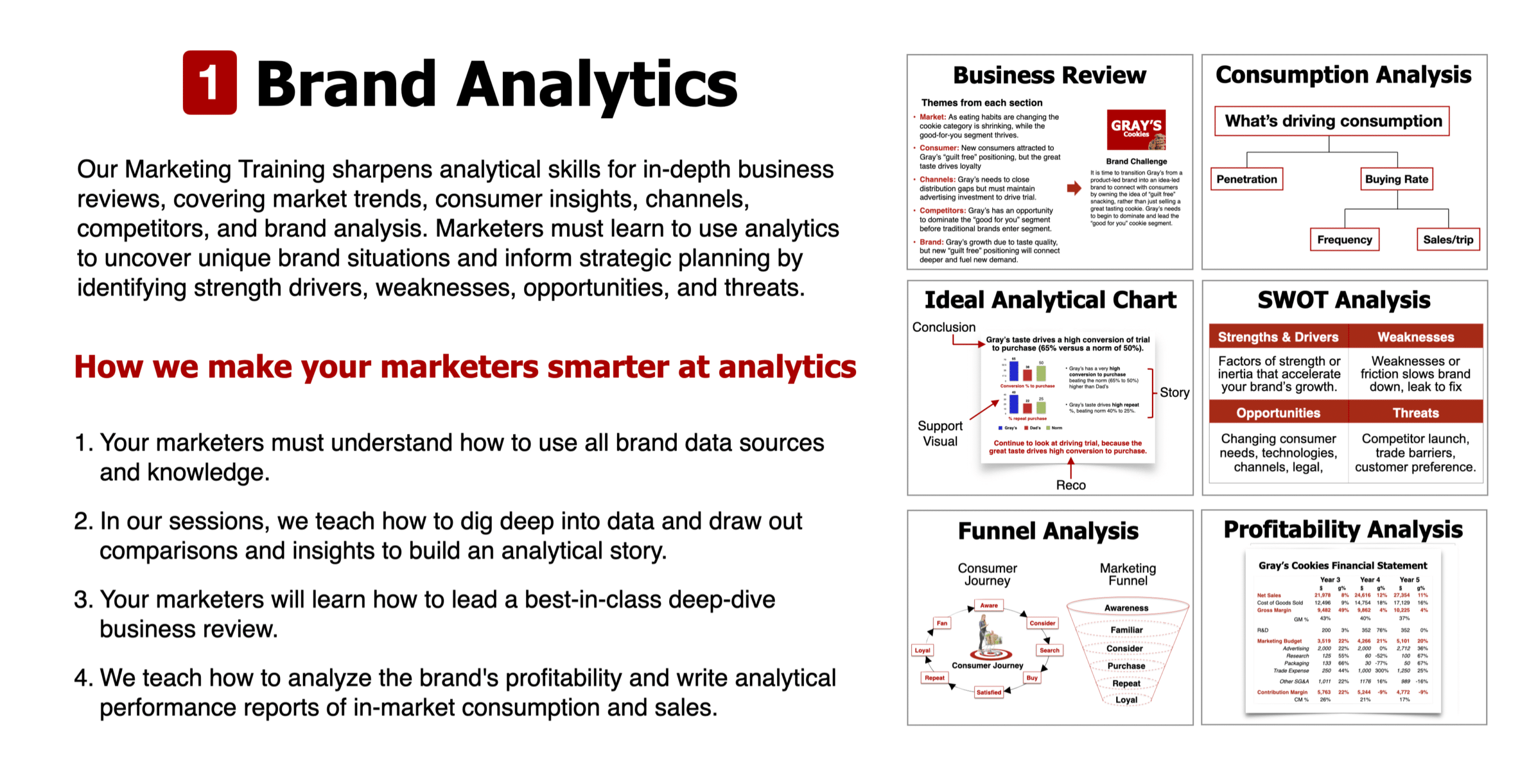
To illustrate, click on the image above to review the brand management analytics skills you need.
Analytical Skills needed in brand management
First, to be successful in brand management, you must understand all brand data sources and knowledge—market share, funnels, consumption, qualitative, VOC, and financials. Next, you must dig deep into data and draw out comparisons and insights to build an analytical story that sets up the business problem to solve. I love analyzing the consumer journey and digging into the marketing funnel work. To read more on marketing funnels, click this link: Marketing Funnels.
Most importantly, you must lead a best-in-class 360-degree deep-dive business review for the brand that identifies the key issues that set up the strategies. Finally, in brand management, you are running a business. You show how to write analytical performance reports that outline the strategic implications of in-market consumption and sales performance. To read how to write a monthly report, click on this link: Monthly Report.
To illustrate, click on the image above to review the brand management analytics process you need.
Business Review process for brand management
Maximizing a brand’s potential requires a strategic deep-dive into its ecosystem. Here’s a distilled approach for an effective business review:
Marketplace Overview:
Start with a high-level analysis of your brand’s environment. Examine sales trends, economic indicators, and consumer behavior to set the groundwork for strategic development.
Consumer Analysis:
Decode your customers’ beliefs and habits. Use data to understand their journey from initial awareness to brand loyalty, and identify areas for engagement improvement.
Channel Assessment:
Evaluate your distribution channels’ performance. Are your strategies effective? Use scorecards to identify where to boost your presence or optimize your approach.
Competitor Comparison:
Dissect competitor strategies on brand image, pricing, and innovation. Identify your competitive stance and opportunities for differentiation.
Brand Health Check:
Review your brand from multiple angles — consumer, customer, and employee perspectives. Monitor key metrics like brand recall and purchase intent to measure impact.
Business Review Summary:
Conclude with a synthesis of insights to challenge your brand’s status quo. This challenge should inspire actionable strategies to deepen market engagement and refine your brand’s market position.
This concise blueprint offers a pathway to not only grasp your brand’s standing but also to spotlight opportunities for growth and innovation.

2. Strategic Thinking
Using strategic thinking to figure out the best key issue questions your brand faces
When your marketers jump straight to tactics, they miss the underlying issues hurting the brand. The best marketers use strategic thinking to understand your brand’s unique circumstances. Our Strategic ThinkBox helps them ask challenging questions about
- Brand’s core strength
- Consumer bond the brand has built
- Competitive dynamic
- Business situation.
To illustrate, click on the image above to review the brand management strategic skills you need.
The strategic thinking skills needed in brand management
In brand management, marketers will take a holistic view that determines your brand’s core strength, consumer bond, competitive dynamic, and business situation. Next, you must slow down to think strategically, coming up with the most challenging, interruptive questions before reaching for solutions.
Most importantly, in brand management, you must show how to structure smart strategic decisions that line up with a vision of a better future for their brand. You must learn how to invest in building strategic programs, identify focused accelerators that make the investment work harder, and deliver a market impact that leads to a desired performance result.
Finally, you must be able to articulate the strategy throughout the organization to ensure everyone working on the brand can understand and deliver against it.
To illustrate, click on the image above to review the brand management analytics process you need.
Our Beloved Brands process for the Strategic Thinking you need in Brand Management.
Strategic thinking is the compass in brand management that guides a brand towards becoming cherished and enduring with your consumer base. Our Beloved Brands process above is a meticulous approach to understanding and leveraging your brand’s strengths within the market.
Identifying Core Strength:
Begin by pinpointing what your brand stands for. Is it the product, the story, and the experiences that is your brand’s superpower? Determine if your investments and communications are aligned with these strengths and identify areas for improvement. To read how to build around your core strength, click this link: Core Strength
Consumer Connection:
Evaluate the depth of your relationship with consumers. From indifference to beloved status, analyze the consumer’s journey and uncover insights to enhance brand loyalty. Examine the marketing funnel metrics like penetration and purchase frequency to gauge the bond with your consumers. To read more about building your consumer strategy, click on this link: Consumer Strategy
Competitive Positioning:
Understand your brand’s role in the market. Are you a disruptor, a challenger, or the leading power player? Identify your unique positioning. Then, decide whether to focus on attacking or defending market space, considering the intensity of the competition and your investment strategies. To read more on competitive strategy, click on this link: Competitive Strategy
Business Situation Assessment:
Scrutinize your current business situation, whether you’re driving momentum, in need of a turnaround, or starting fresh. Look into sales, profits, market share, and the health of distribution and product pipeline. Identify the most significant gaps that need attention and plan accordingly.
Strategic Decision-Making:
Finally, ensure that your strategic choices resonate with your brand vision and are informed by the specific challenges and opportunities you face. The key issues extracted from the process will chart the course of your brand’s vision.
By employing the Beloved Brands strategic thinking process, you can craft a coherent narrative for your brand, forge stronger consumer bonds, and navigate the complexities of competitive markets with clarity and purpose.
To illustrate, click on the five elements of strategy to see how they can help communicate the strategy.
One of the most challenging aspects of brand management is the ability to cascade your strategic thinking to partners and peers throughout the organization. Strategic planning can seem daunting, but organizing your approach into clear elements can demystify the process and set a clear path to success.
Follow our five elements of strategy including the vision, issues, programs, accelerator, and results.
Here’s a concise way to communicate your strategic thinking:
Vision:
Start by setting a long-term vision for your brand. It should be ambitious but attainable, framing the future in a way that guides every decision.
Issues:
Identify the obstacles with a strategic think box tool, pinpointing core strengths and consumer connections. Assess your competitive position and current business situation to clarify what’s in the way of achieving your vision.
Programs Investment:
Channel your resources into consumer touchpoints: brand promise, story, innovation, purchase moments, and happy experiences. This holistic engagement drives sales and brand loyalty.
Accelerator Focus:
Determine your ‘accelerator’, a key component that ensures your investment is smart and provides a high return. Whether it’s new technology or influencer opinions, this drives your strategy forward.
Results:
Ultimately, your strategy must deliver tangible results. It should move consumers along their journey, deepen their relationship with the brand, and harness brand power to drive profit.
By following these five elements, your strategy becomes a well-oiled machine, leading to a brand that not only promises but delivers, securing its place in the market for years to come.
Beloved Brands Marketing Training
To view, use the arrows to see our Beloved Brands Marketing Training program video.
It's time to elevate your marketing team's performance with our Beloved Brands Marketing Training program.
Our marketing training makes your marketers smarter with brand analytics, strategic thinking, brand positioning, brand plans, and marketing execution.
3. Brand Positioning
Using conceptual thinking skills to figure out the ideal brand positioning space that motivates consumers and is ownable.
Too many times, brands try to be everything to anyone they end up being nothing to everyone. In brand management, the best marketers use conceptual thinking to create the ideal consumer profile adding moments of accelerated needs, underlying consumer insights, and enemies that torment them. They build the brand positioning statement balanced with functional and emotional benefits. Then, they use an organizing brand idea to steer everyone who works on the brand.
To illustrate, click on the brand positioning skills you need to be successful in brand management.
The brand positioning skills you need in brand management
In brand management, everything must start with the consumer. You must be able to define an ideal target market (consumers, users, shoppers) framed with accelerated needs, consumer insights, and enemies. Learn to use our functional and emotional cheatsheets, with 100 keywords to build the brand positioning around, to help you turn product features into the ideal functional and emotional consumer benefits.
Most importantly, you must be able to find that winning brand positioning space that is own-able for the brand and motivating to your target, summarized with a brand positioning statement. Finally, you must develop a brand idea that can steer how the brand shows up to every touchpoint and organize everyone who works on the brand to deliver.
Our Beloved Brands process for the Brand Positioning you need in Brand Management.
Defining a winning brand positioning is a critical process in brand management, and the Beloved Brands model offers a clear and effective framework for achieving just that. Always keep in mind the end goal is to find that space that is the most motivating for consumers and most ownable for the brand.
To illustrate, click on the brand positioning process you need to be successful in brand management.
1. Target Profile Definition:
It begins with a deep understanding of the target consumer by developing a focused profile that includes insights, enemies, and buying patterns. For instance, Gray’s Cookies targets proactive preventer cookie lovers, a demographic keen on maintaining their health without sacrificing enjoyment.
2. Benefits Ladder:
The process then employs a Benefits Ladder to elevate the conversation from product features to consumer emotions. By moving up, “How does the brand make me feel?” rather than “What do I get?” a brand can connect more deeply with its audience, addressing their rational and emotional needs.
3. Consumer Benefit Cheatsheets:
Utilizing cheatsheets helps clarify the functional and emotional benefits a brand offers. These benefits range from practical functionalities like “saves time” or “reduces effort” to emotional rewards such as “makes me feel empowered” or “brings joy”.
To illustrate, click on the consumer benefit cheatsheets we use in the brand positioning process.
4. Consumer Benefit Sorting:
By sorting through these possible consumer benefits, brands can identify the ones most motivating to their target audience and ownable for their brand, thus defining their unique market position.
5. Brand Positioning Statement:
Finally, this process culminates in a succinct positioning statement. For Gray’s Cookies, it’s about being “The guilt-free cookie that helps you stay in control of your health,” a clear and motivating message that resonates with health-conscious consumers.
This strategic framework doesn’t just define what a brand is; it encapsulates what it stands for in the hearts and minds of consumers. A brand can stand out in a crowded market and build lasting loyalty by articulating and owning a unique space. The Beloved Brands model ensures that every element of the brand positioning is aligned with the ultimate goal: to become not just a choice but a beloved staple in the lives of its customers.
To read more about how to build a brand positioning statement, click on this link: Brand Positioning Statement
Using an organizing brand idea to build the brand reputation
The brand idea is the keystone of brand management, acting as the guiding light that ensures every facet of the organization contributes to building a robust brand reputation. It’s the crystallized expression of a brand’s soul, a simple message that encapsulates what a brand stands for and strives to deliver.
Using the brand idea to simplify the brand soul
A strong brand idea simplifies complex brand messages, making them relatable and understandable to the consumer. It distills the essence of the brand into a powerful, singular thought that resonates deeply with the target audience.
The idea is what consumers connect with Connection:
Consumers make snap decisions, often within seconds. A resonant brand idea can instantly connect with consumers, compelling them to consider the brand as a part of their lives. This immediate connection is critical in a fast-paced market where first impressions count.
Consistency Across Touchpoints:
A consistent brand idea ensures uniformity across all consumer touchpoints, from packaging and advertising to the sales experience. When consumers receive a consistent message at every juncture, trust is built, and the brand becomes a familiar, dependable presence in their lives.
Personal Experience to Public Reputation:
Consumers’ personal experiences with a brand form the foundation of its public reputation. A brand idea that delivers on its promise turns customers into advocates, amplifying positive perceptions and extending the brand’s reach.
Brand Soul and Reputation Alignment:
The ultimate goal is achieving harmony between the brand soul and reputation. When the brand idea is perfectly aligned with the brand’s core values and consistently experienced by consumers, the reputation naturally reflects the brand’s true character.
Employing a brand idea in this way guides internal strategies and operations and creates a strong, consumer-facing identity. It is a strategic asset in building brand equity, setting it apart in a competitive landscape, and fostering long-term loyalty. The brand idea becomes a self-fulfilling prophecy; the clearer and more compelling it is, the more robust and positive the brand reputation becomes.
To read more on the organizing brand idea, click on this link: Brand Idea.
4. Brand Plans
Brand Plans decide how to cascade the strategy down to execution plans that everyone can follow.
When marketers try to do too many things in their brand plan, none have enough resources to make an impact. The best in brand management use planning skills to write a strategic plan that defines how to invest their limited resources to build capabilities that drive growth. They establish a vision, purpose, values, and goals that define a better future. And they find key issues of what’s in the way with detailed strategies and execution plans to guide everyone who works on the team.
The brand plan skills needed in brand managment.
In brand management, you must be able to translate smart, strategic thinking into key issues and strategic statements that form the foundation of the brand plan. Next, you will make decisions on all elements of a smart brand plan, including the vision, purpose, values, goals, issues, strategies, and tactics.
Importantly, you must learn how to be stronger in writing and presenting the brand plan to senior management and across the organization. Finally, you will develop smart execution plans—communication, sales/retail, and innovation—that deliver against the brand strategies.
Comprehensive Business Review:
The plan starts with a thorough examination of the brand’s ecosystem, considering market trends, consumer behavior, competitive landscape, and channel dynamics. This review helps in identifying the brand challenge that encapsulates the strategic direction the brand needs to take.
SWOT Analysis:
Strengths, weaknesses, opportunities, and threats are mapped out to provide a clear picture of the brand’s current state. Understanding these elements is crucial for strategizing future moves and anticipating market shifts.
Strategic Questioning:
Using tools like the Strategic ThinkBox, brands can frame critical questions around core strengths, consumer bonds, competitive position, and business situation. This approach brings clarity to the brand’s key issues and shapes strategic thinking.
Strategic Framework Development:
The brand uses insights from the ThinkBox to outline key issues and formulate strategies that address these concerns while aligning with the brand’s overarching vision.
Integrated Brand Plan:
Finally, everything coalesces into a coherent plan, including vision, issues, goals, strategies, and execution. This plan ensures all stakeholders are aligned, with clearly defined objectives and detailed action plans that are designed to achieve forecasted sales targets and market growth.
This structured brand plan process ensures a brand can navigate complex markets, remain focused on strategic goals, and adapt to changing dynamics, ultimately leading to sustained success and growth in brand management.
We have a few brand planning articles to go deeper into:

5. Marketing Execution
Narrow your thinking as you move into marketing execution to deliver the brand positioning and stay on strategy.
When the marketing execution is not organized and aligned to the strategy, everyone who executes ends up operating in silos.
In brand management, the best marketers use instinctual thinking to help make decisions on any execution that goes to the market. The best marketing execution focuses on the target, fits with the brand, delivers the main message, and stays on strategy.
They write smart, emotional, creative briefs that inspire experts to deliver their best work. They make smart decisions when it comes to creative advertising, media investment, new product innovation, and in-store marketing. And, they work well with agency partners, product development, and the sales team.
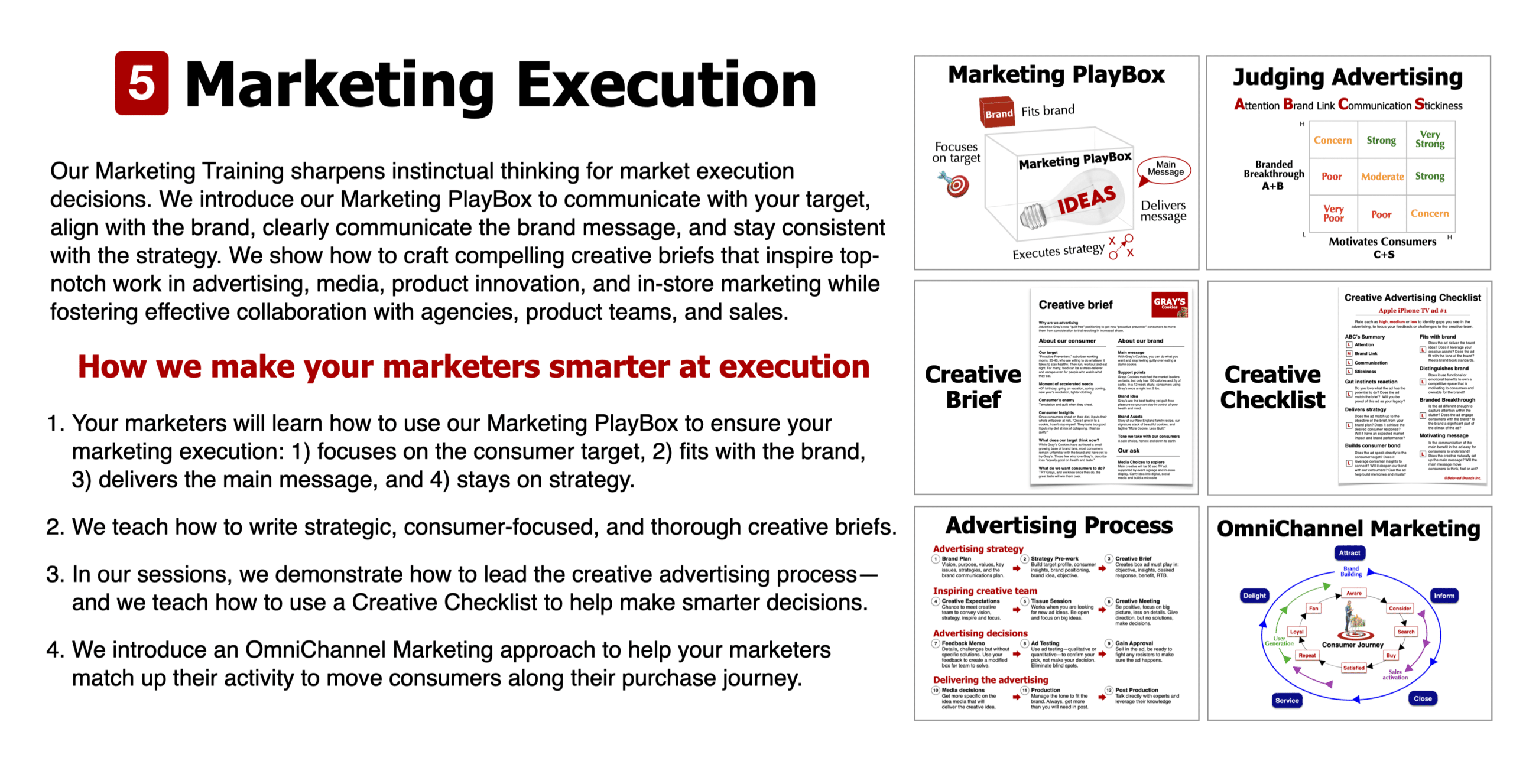
The marketing execution skills you need in brand management
In brand management, any marketing execution project should use our Marketing PlayBox and checklists to make smarter and more creative decisions on advertising, innovation, and in-store.
Importantly, you must know how to write strategic, consumer-focused, and thorough creative briefs to steer and inspire great work from experts, plus guide your decisions. Learn to partner with experts to inspire greatness from the teams of experts to deliver great work.
Finally, your role is to make smart and creative decisions backed by an OmniChannel mindset to deliver the strategy and tighten the bond with your consumers.
The marketing execution process in brand management
The marketing execution process is a pivotal component of brand management, ensuring that the core brand idea is not just a concept but a living, breathing part of every consumer interaction. Understanding and mastering this process is essential for anyone in brand management to ensure the brand’s success.
1. Organizing Brand Idea:
The process begins with an organizing brand idea that acts as a North Star for all brand activities, ensuring consistency across all consumer touchpoints. This central idea should encapsulate the brand’s promise and story, driving innovation and purchase moments, and leading to positive customer experiences.
2. Execution Plans:
From the overarching Brand Plan, execution plans for communications, innovation, and retail are developed. These plans are rooted in the brand’s positioning and are designed to operationalize the brand’s strategy in concrete, actionable ways.
3. Creative Brief Development:
A comprehensive creative brief is then crafted, outlining the strategy, consumer target, main message, brand idea, brand assets, and media channels. This brief serves as the blueprint for marketing initiatives, guiding the creative direction and ensuring alignment with the brand’s goals.
4. Branded Breakthrough and Consumer Motivation:
Effective marketing execution achieves two things: a branded breakthrough, which is how the message is communicated, and consumer motivation, which is the core of what is being communicated. The best executions are those that not only catch the consumer’s eye but also resonate emotionally, spurring action.
5. Using our Marketing PlayBox in brand management:
The Marketing PlayBox tool aids in generating and evaluating ideas that focus on the target consumer, fit the brand, deliver the right message, and execute the strategy effectively.
6. Creative Applicability:
This process is versatile and can be applied to any type of marketing execution, whether it be digital campaigns, in-store promotions, or media advertising.
In essence, every professional in brand management needs to internalize this process to ensure that the brand’s message is not only heard but felt and acted upon by consumers, leading to brand growth and a stronger market position.


